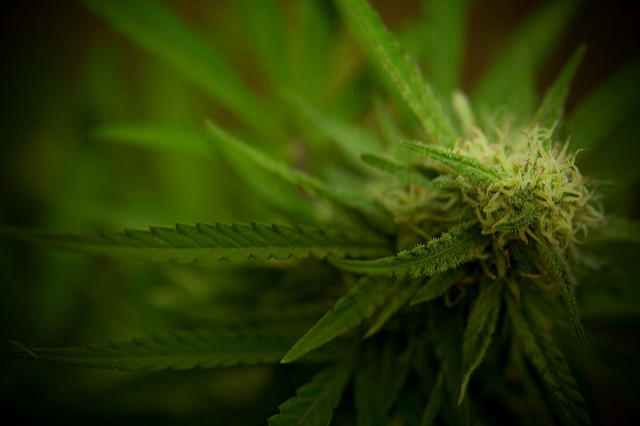
Hemp is often considered to be the most universally useful plant on the planet. When grown in an agricultural setting, hemp can provide us with some of the most durable fibers (clothing), food and beverages, paper, building supplies, plastics and fuel. Despite the abundance of resources this plant provides, the cultivation of it is considered to be an illegal practice in many countries around the world.
In addition to the varied resources hemp cultivation can provide, the plant can be grown in pretty much any soil; does not require pesticides; is low maintenance; and can even cleanse soil contaminated with fly ash, sewage sludge, or other heavy metals. When all of these factors are considered, it seems difficult to understand why this plant is illegal.
There are many myths and misconceptions about the difference between hemp and marijuana, which is a result of nearly 80 years of federal cannabis prohibition. Hemp refers to the plant called ‘cannabis sativa,’ a strain that has been used for purposes that don’t involve intoxication. There are other plants that are called hemp, however, cannabis hemp is the most durable of the hemp plants, making it the most useful.
Unlike marijuana (the flowers, buds, or leaves of the cannabis plant), possession of hemp (the roots, stalk, and stems of the cannabis plant) is legal to possess. However, as the cultivation of the plant will result in both marijuana and hemp, industrial hemp products were not, until recently, produced in the United States.

A number of contributing factors – racism, reform and corruption – eventually led to the plant’s illegal status in the United States. In order to grasp a better understanding of the events that led up to the decision, we will first look at the history of two other drugs, opium and cocaine.
In the wake of the Civil War, a relatively large group of Chinese immigrated to the United States. Chinese workers often used opium – a highly addictive drug – when working in the sweat shops of the Industrial Revolution. As the drug made the menial tasks more interesting, and numbed the mind to pain and exhaustion, the Chinese workers were able to work longer hours. After a time, this became a source of resentment for many White American workers.
Using their political advantage, the White working class of America devised a plan to prevent Chinese immigrants from entering the country. This was achieved by stirring racist feelings towards the Chinese people, and the foreign and mysterious practice of opium use was the easiest thing to focus this on.
The tactic was then used to target Black Americans, with reports associating cocaine use and violent outbreaks with the black community. Both opium and cocaine were banned in the country. Finally, marijuana was also targeted as part of this trend, when Mexican immigrants became the source of resentment during the Great Depression. Mexican soldiers were known to smoke the plant when they fought against America in the war against Spain. Black jazz musicians were also targeted for their marijuana use.
However, like most monumental policies, there were a number of complementary factors that drove the ban on marijuana. After prohibition – a movement that made alcohol illegal – the United States was left with a large number of unemployed police officers – enter the Federal Bureau of Narcotics and Dangerous Drugs – today, known as the DEA (The Drug Enforcement Administration).
A man named Harry J. Anslinger was appointed as head of The Federal Bureau of Narcotics and Dangerous Drugs by his uncle-in-law Andrew Mellon, the then Secretary of the United States Treasury. During the period known as Reefer Maddness, Anslinger (who was known to have a personal dislike of jazz music and the black musicians who made it) attended teacher’s and parent’s meetings to inform them of the ‘dangers of marijuana.’
Around this time, Dupont Chemicals invented a ‘chemical pulping’ paper and had signed a multi-million-dollar deal with a timber holding company and newspaper chain owned by William Randolph Hearst. However, around the same time, other machines made for braking hemp appeared (the original process – which involved men having to “brake hemp stalks in order to separate the fiber from the woody core” – required a hand device, known as a hand-brake, and a lot of physical strength.) With the introduction of these new machines, the idea to use hemp herds to make paper and plastic (which was originally “considered to be a worthless waste product that was thrown away after it was stripped of fiber“) was proposed.
Thereafter, hemp was considered a threat to big business interests, including that of chemical pulping paper, a deal which was backed by none other than Andrew Mellon. The hemp industry needed to be stopped. To tackle the hemp threat, the Marijuana Tax Act was passed in 1937 in an unorthodox way and without the knowledge of those who would possibly oppose the bill. The American Medical Association, for example, discovered the bill just two days before the hearing. According to reports, the bill was passed partially due to Harry J. Anslinger’s testimony.
Image: Flickr, Marc Fuyà (CC BY-SA 2.0)
You want to support Anonymous Independent & Investigative News? Please, follow us on Twitter: Follow @AnonymousNewsHQ
This article (The Real (and Full) Reason Why Marijuana is Illegal in the United States) is a free and open source. You have permission to republish this article under a Creative Commons license with attribution to the author and AnonHQ.com.




